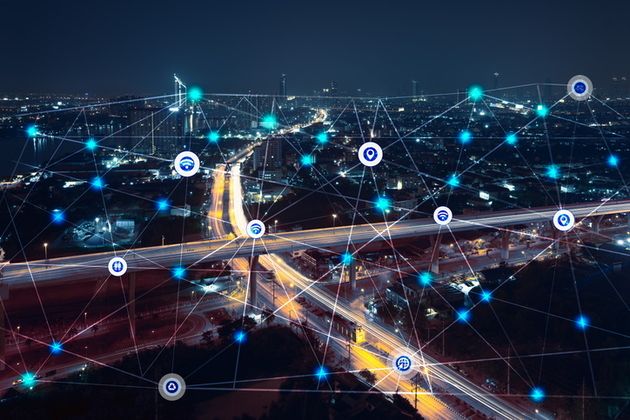LoRa, the winning network for the IoT


To communicate, connected objects do not use 3G, 4G or 5G networks but very low-speed infrastructures specifically dedicated. These are the networks (Low Power Wide Area Networks) that can therefore be translated as “extended long-range networks”. Based on the 800-900 MHz frequency band, they effectively offer a significant range while being less energy-intensive.
There are cellular LPWANs, compatible with 5G, such as LTE-M and NB-IoT (Narrowband IoT) technologies, and non-cellular networks, with LoRa and Sigfox. Offering higher data rates and lower latency, the former respond to real-time constraints but to the detriment of energy consumption. As for the 5G NR-Light, which is in the process of standardization, it will not be marketable before 2024.
Converging Sigfox and LoRa
Conversely, LoRa and Sigfox make it possible to circulate small data packets while preserving the battery life of connected objects, beyond ten years. This is an ideal compromise for temperature or humidity sensors or weather stations. Although they left after Sigfox, the proponents of LoRa (Long Range) technology seem to have won the race for IoT networks. In full expansion, the LoRa Alliance brings together more than 180 operators worldwide.
For its part, Sigfox has had a difficult time. Placed in receivership, the former French flagship of the internet of things was taken over, in April 2022, by the Singaporean operator Unabiz. A year later, the new owner of Sigfox 0G technology signed a partnership with Actility, co-inventor of LoRa technology, to converge the two networks.
On the side of LoRa, Bouygues Telecom has thrown in the towel. The operator has announced that it will cut off, at the end of 2024, the LoRaWAN network that it markets under the Objenous brand. Conversely, Orange Business announced, on the occasion of the last Sido show, that it will continue to support the development and deployment of new projects by extending its LoRaWAN network not until 2027 as an interview with a manager could suggest, but beyond this deadline.
IoT & Interactive Solutions Director at Orange Business, Etienne Robert confirms to us all the interest that the incumbent operator has in LoRa. “It is the most relevant technology both in static and mobile environments while guaranteeing low energy consumption. It uses the resources of the connected sensors as little as possible, which extends the life of their battery”.
The LoRaWAN public network in Orange covers more than 30,000 municipalities and 95% of the French population. This infrastructure can be supplemented by a private network for critical applications but also by nano-gateways which act as mini antennas to ensure indoor coverage, such as in car parks or hangars.
Orange Business has established partnerships in order to respond to different use cases such as remote collection (Birdz, a subsidiary of Veolia) or waste management (BH Technologies). The ESN has also partnered with Weenat which markets weather stations for farmers or Invoxia which distributes trackers to trace any type of vehicle.
The Sarthe and Noisy-le-Grand bet on the LoRaWAN
However, it is in the field of the smart city that the field of application seems the most promising. A department served 100% by fiber, Sarthe intends to invest 2.5 million euros for the deployment of a LoRaWAN network. At the maneuver, we find Axione, a joint venture of Vauban Infrastructure Partners and Bouygues Energies & Services.
Four major use cases have been identified. In the field of waste management, connected sensors, integrated into the containers, regularly measure the filling rate and transmit the information in order to optimize the garbage collection routes.
With regard to water management, sensors measure the water flow and track the height of water in reservoirs and groundwater tables. Placed on the meters, they ensure the remote reading at the users. More generally, the LoRaWAN network must make it possible to better manage water consumption on the territory and avoid waste.
Other sensors make it possible to remotely control the public lighting system or to report possible failures. In order to optimize its energy consumption, a municipality will be able to vary the light intensity according to the desired schedule.
Last use case: building management. The low-speed network will make it possible to monitor the electricity consumption, the attendance of the rooms, the security, the lighting, the hygrometry, the temperature or the rate of CO2 of the public or private buildings.
Sarthe is not the only community to be interested in the contributions of this technology. According to The Journal du Net, Noisy-le-Grand, in Seine-Saint-Denis, intends to deploy its own LoRaWAN network as part of its smart city strategy.








